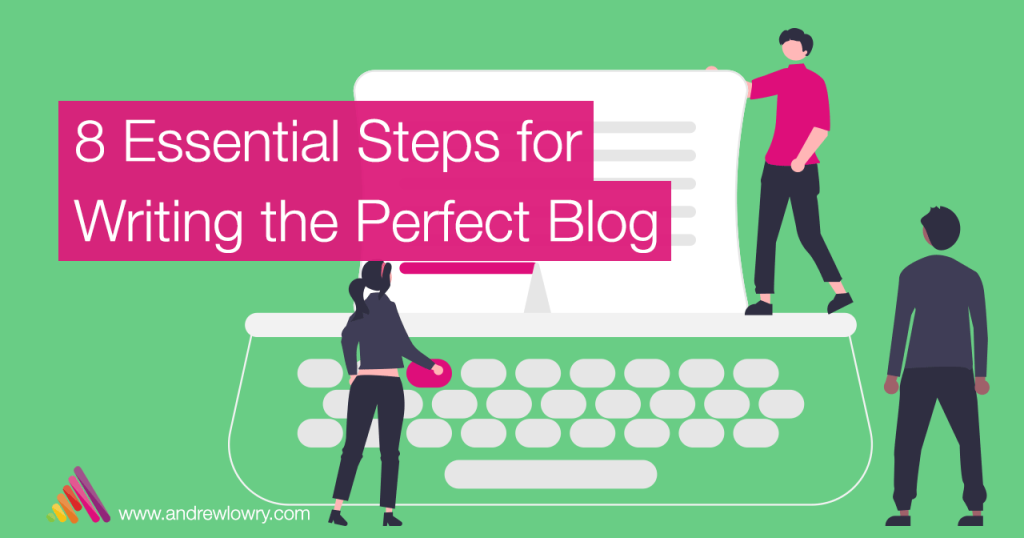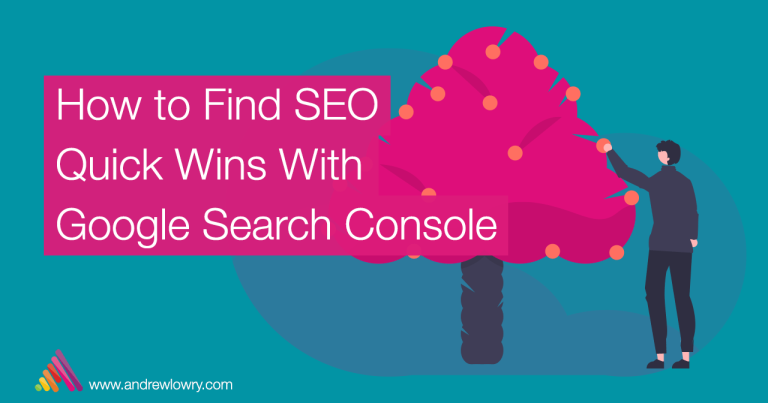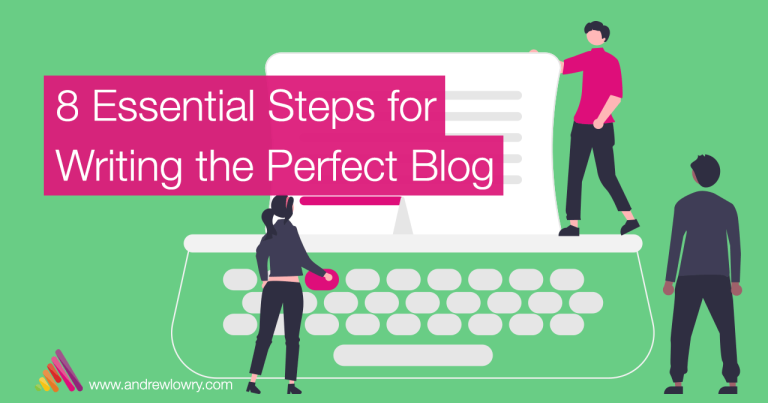Content marketing is a strategy to attract, engage and retain customers by creating informative content that your target audience appreciates.
Not only will this content increase your organic search traffic but it will demonstrate expertise, authority and trust in your brand and blogs are an essential part of this mix.
Table of Contents
1. Choosing Your Blog’s Subject Matter
It’s important to understand where in the buying process your potential visitors are and target your blog posts accordingly.
Whilst your product or service page may rank for those who are later in the purchase decision-making process, blog articles can be great for answering the questions that your customers have earlier in the research phase.
Defining who you want to attract and what it is that your defined target audience wants is a key first step when starting to write your blog article.
Before someone starts searching for “local SEO near me” or “solar panel installation near me”, for example, they will have other questions that need answering.
If we take the latter example, they might be asking:
- How many solar panels are needed to power a typical house?
- Are solar panels worth the money?
- How much does solar panel installation cost?
- How long do solar panels last?
You should be writing blog posts that answer those questions.
2. Researching Your Keyword and Phrases
Each blog post should focus on just one or two keywords or phrases.
The question you are tackling could be that phrase.
There is a wide array or tools available to find keywords or phrases worth ranking for and I covered some of those in a previous article.
Here are a few tools that I find uuseful:
You should definitely use some of these tools to assess the volume of traffic the keyword or phrase you want to target is achieving. If the volume is too low or the competition for that term is too high, then it might be worth rethinking before you spend any more time and effort on this topic.
One of the simplest means of research available is to enter your phrase into Google and look at the top-ranking results.
What type of pages are ranking? Are they information pages, product landing pages, long or short form content?
Knowing what kind of page Google is ranking means that you know what sort of content you need to produce to rank well. If all the top-ranking pages for your search term are product category landing pages, then writing a well-informed blog article is not going to get you ranked and you will more than likely have to go back and re-think your keyword choice.
Assuming that the top-ranking pages are blog articles, look at the structure and content of the pages. Do they have similar keywords in their headings and sub-headings? Do they have similar media types, such as photos, illustrations, graphs or videos?
If so, you are probably going to have to also include those elements on your page.
3. Competitor Research and Analysis
Your competition falls into two main categories:
- Direct traffic competition
- Business competitors
When Googling your chosen keyword, those websites that are ranking on the first page of Google are your direct traffic competition.
However, you’ll also know that you have established business competitors and it’s really useful to know whether they are also covering the same subjects as well.
To find this out, you can again use Google. Try the following search:
site:competitorwebsite.co.uk “keyword phrase”
The site: search operator in Google has many uses but, when combined with your targeted keyword, in inverted commas, it can give you great insights into the content strategy of your business competitors.
Once again, look at each of their pages and make notes on the structure, heading, sub-headings and types of media used in their pages.
4. Research Sources to Validate Your Content
If it’s applicable, then make sure you link out to authoritative sources that validate the arguments in your article. Surveys and data from well-known sources are great for this.
This helps Google to give your article further context.
Just make sure that you open those links in a new window otherwise, you’re in danger of losing your visitor entirely.
5. Choosing an Eye-Catching Title
You need to have a title that people want to click on.
It’s no good to spend loads of time honing a beautiful blog article if no one is ever going to click on the link because the title doesn’t grab them.
Below, are some links to articles for further reading on the topic of content marketing. Have a look at the titles, what do they have in common?
- 15 Proven Ways to Drive More Traffic to Your Blog
- 352 Copywriting Power Words to Use for Content That Pops
- 13 Content Marketing Ideas for Small Businesses
A lot of articles like to include a number at the start. There’s also the use or power words, for which there is a full article – whether you need all 352 of them is, of course, up to you!
6. Structuring and Writing
With the research phase out of the way, you now need to focus on creating the structure of your article and actually writing it.
Start off by writing the structure of the article in bullet points – be sure you keep in mind the structure of the top-ranking websites from your earlier research.
It’s important to get your initial ideas down. Combined with the insights from your research phase, this first draft structure not only organises your thoughts but can also identify areas that require additional research.
Next, flesh out those bullet points into sentences and those sentences into paragraphs.
Be sure to structure your article with the correct html header tags.
The title of the articles should always be an H1 tag. Sub-headings should then be H2 and any further sub-headings under that should be H3.
Make sure that your article is optimised for readability:
- Keep paragraphs short
- Simple and short sentences
- Use sub-headings to break up text
- Use bullet points and block quotes
- Use images and videos that are relevant
If you want to include video content, it doesn’t mean that you have to create it yourself. Feel free to embed content that supports your article from other websites. YouTube makes this really easy.
For example, here’s one:
7. Choosing a Call To Action (CTA)
Whilst you’re no doubt having the time of your life writing blog articles to go on your website, they need to have a purpose.
And that purpose should be to drive the visitors to one of your products or services pages.
Make sure that you have a clear CTA button or box that links to the appropriate pge that will bring you revenue.
As with your article title, make sure that the CTA is compelling and something that a visitor would want to click on.
8. Optimising Your Metadata
When someone searches Google, the main blue link on the search engine results page (SERP) will be the title of the page or article, that you fully optimised earlier.
Ideally, the text that appears below that blue link should be your meta description.
I say, “ideally” because Google does have a habit of re-writing this quite a lot of the time.
Google does this because they believe their description is better than the one provided and their goal is to give their users the right content to answer their questions.
However, this shouldn’t stop you from crafting the perfect meta description yourself because the better your title and description, the better your click-through rate (CTR) from the search engine results page.
Furthermore, ensuring that your description is not only the most catchy on the page but accurately describes the content of your article may actually convince Google to leave it alone.
Summary
Well done.
You should now have a finely crafted blog article targeting a keyword or phrase that has decent volume but isn’t too difficult to get ranked for.
It should have a well-optimised title and meta description which makes people want to click on the link when it appears in Google or on your social channels.
It should be well written and go into enough depth to ensure it matches or exceeds those articles that already rank well on the topic.
And, of course, it should link back to your product or services pages and therefore provide a potential source of revenue which is ultimately the point of the blog.
Next Steps
Unfortunately, that isn’t the end of the story.
Now you have to start promoting it. But we’ll leave that for another day…







